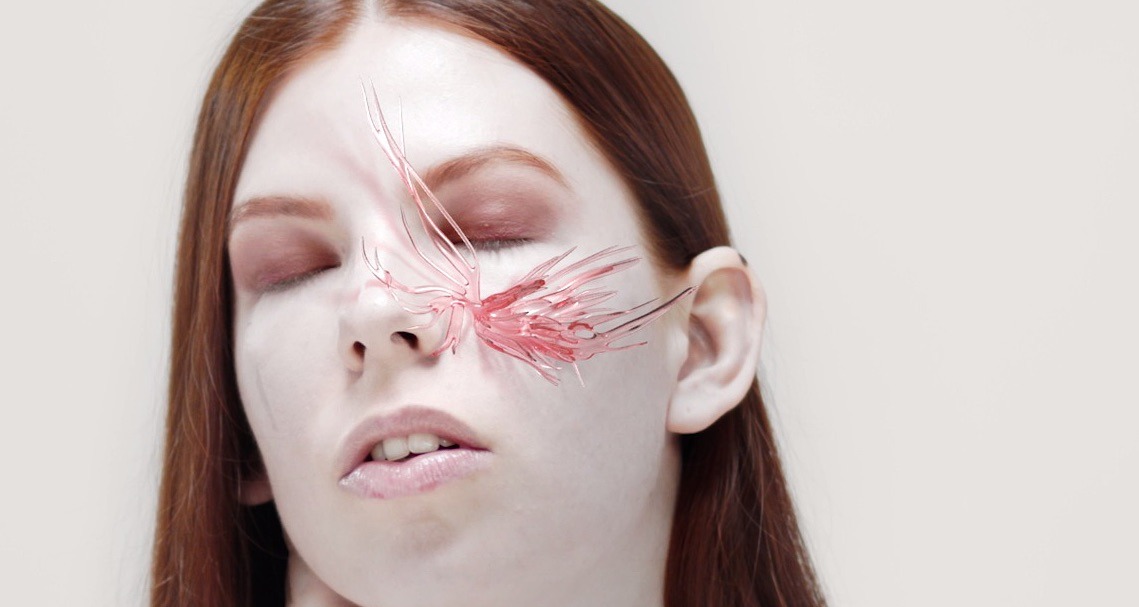
If you only knew from what litter
Dmitry Stepanov
On “Myths of the Anthropocene” exhibition by Katherina Sadovsky and Lilia Li-Mi-Yan at the Futuro Gallery in Nizhny Novgorod
The exhibition “Myths of the Anthropocene” by Katherina Sadovsky and Lilia Li-Mi-Yan, curated by Mila Bredikhina has opened in the Futuro Gallery in Nizhny Novgorod, Russia until 17 September. The project is built around the idea of a closed complete cycle. This idea is revealed both through talking about cycles of production with the optics of ecological discourse and through an appeal to the cyclic time of myth - through the prism of philosophy and art, taking on the boldness of predicting the future.
Photos by Ekaterina Sadovski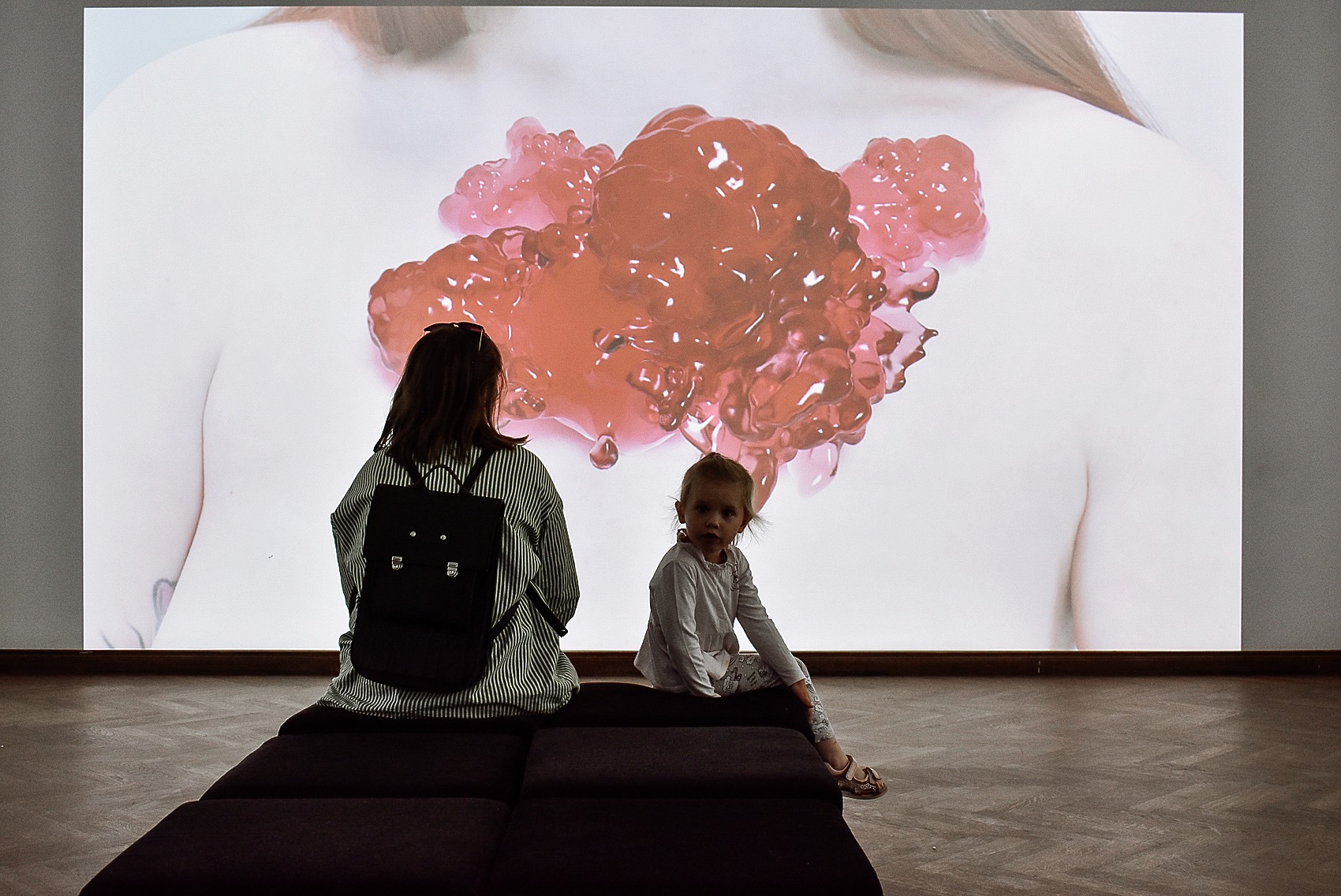
The starting point for the artists’ reflections is the encounter with a specific material whose presence in the human world can already be taken for granted. Plastic is ubiquitous, and since it is, the artists find it in their territory, and begin to collect it from various art institutions in Moscow with the aim of creating upcycled art, which will then be exhibited in practically the same institutions.
The plastic collection resulted in the “Where is my plastic bag?” project (2018). The exhibition “Myths of the Anthropocene” presents those works that, for a number of reasons, were not previously shown at other venues during the presentation of the project, and thus became objects of waste-free production of the second level. Art has always thrived well in this territory, and one can even think of Anna Akhmatova, who wrote “If you only knew from what litter,” showing the ecological component of the poetic statement.

The works from the project “Where is my plastic bag?” come together in the first segment of the exhibition, which can be characterized as “activist”. The artists show a form of activism that is acceptable to them, one that is not so much critical of the problem area as one that proposes a form of personal (re-)action aimed at resolving existing contradictions. Here we see objects created from collected plastic or their photographic images, photographed and presented in a way that evokes associations with the world of the fashion industry.
Next to them there is a three-channel video installation documenting the process of plastic recycling in the “Plarus” factory, where the factory is perceived as nature, within which new symbiotic life forms of people and materials and the aforementioned objects emerge.
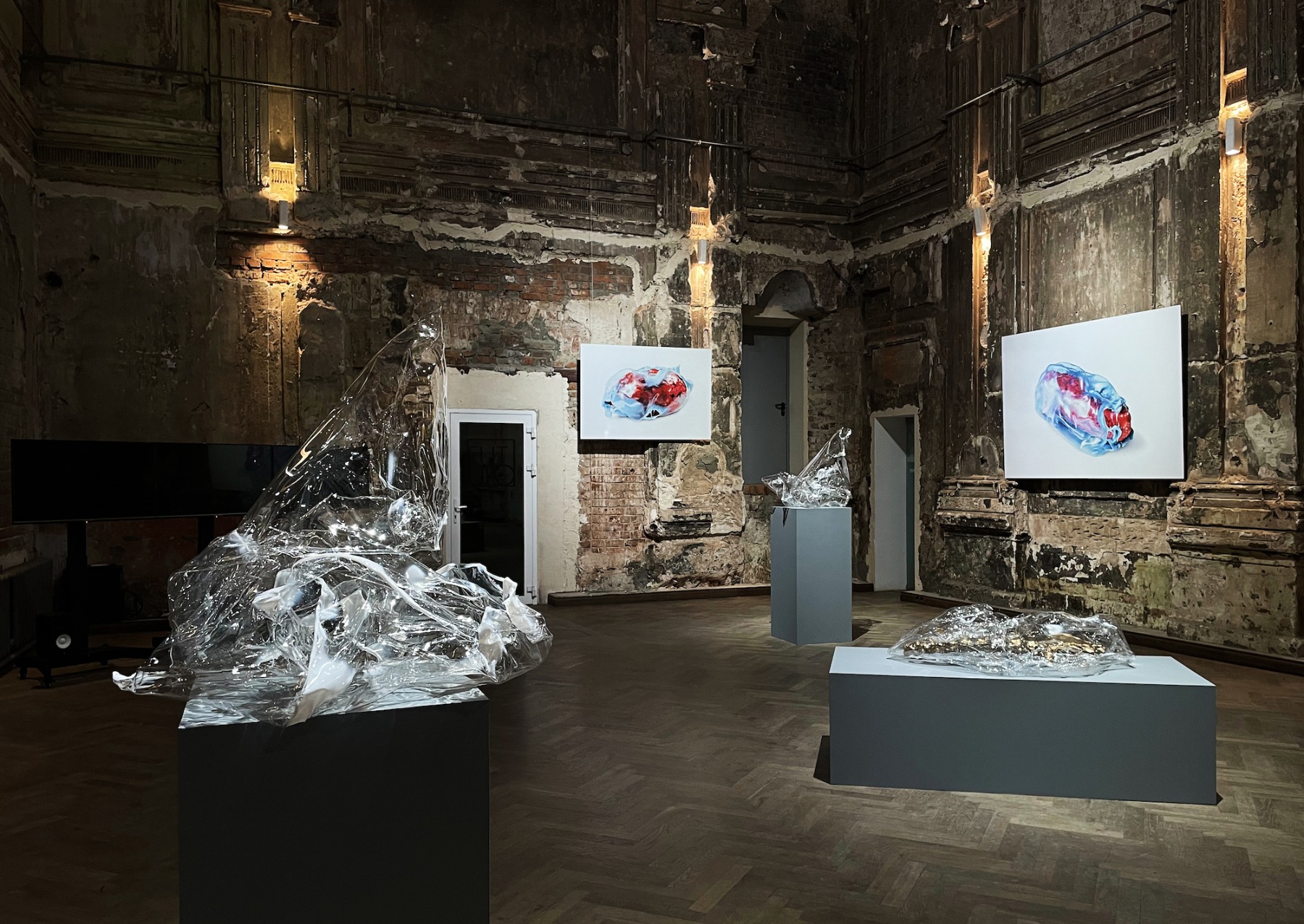
Curator Mila Bredikhina notes that these objects refer to the notion of “organs without bodies”, used by feminist epistemologist Rosi Braidotti to reflect on the possible bio-egalitarianism of humans and other members of the living world.
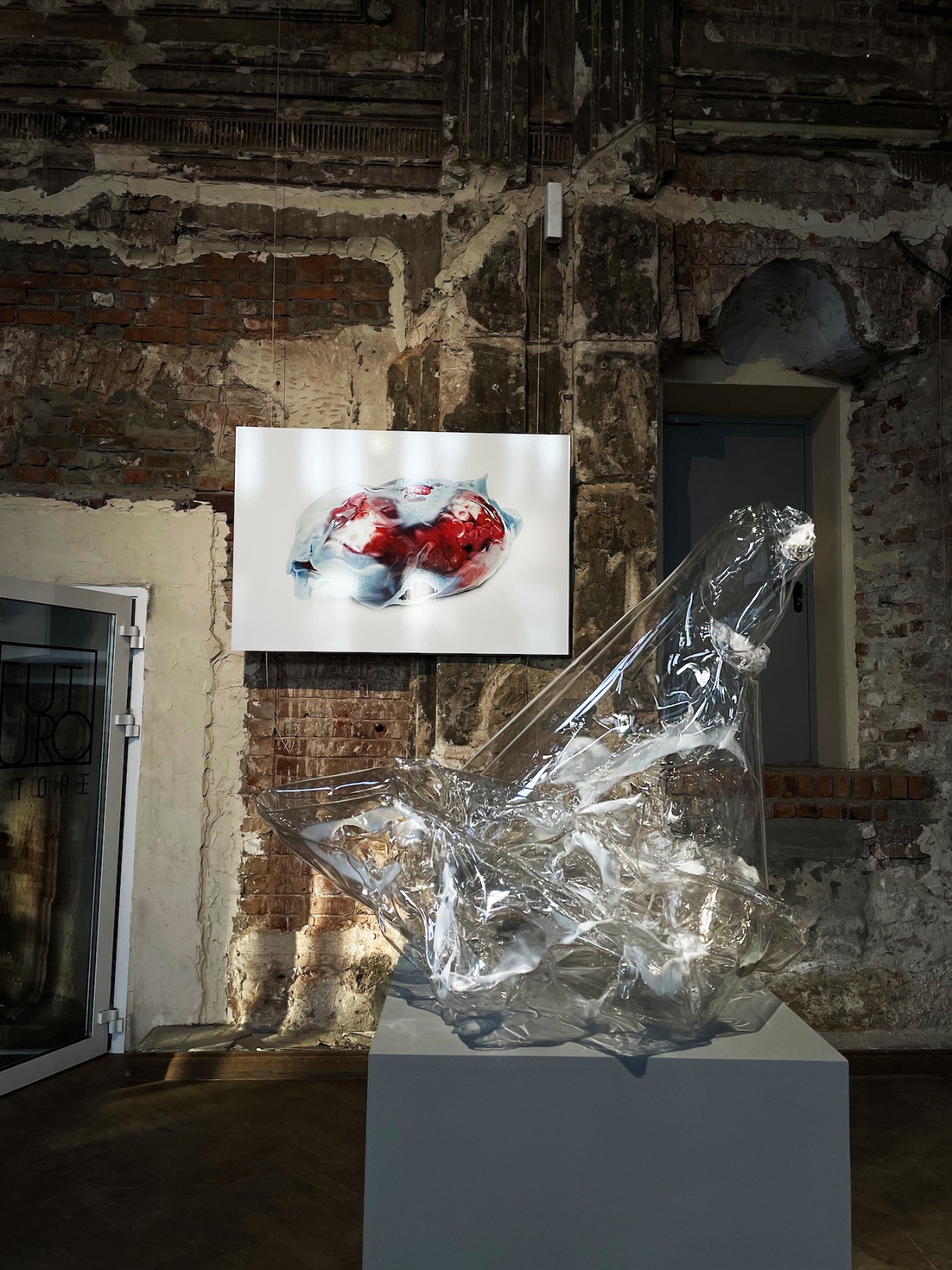
The very notion of “organ without body” is a kind of inversion of the notion of “body without organs,” which became one of the central concepts of Gilles Deleuze and Félix Guattari’s philosophical manifesto, Anti-Oedipus. This manifesto already reveals the political dimension of questions of the living and ecology, to which Félix Guattari will return later when he writes his Three Ecologies in which he shows the inextricable connection between ecology and politics. Guattari wrote about ecology in the late 1980s, and today we see how the concept of “ecology” is no longer solely a question of the human relationship to the environment, but has been used in various fields of the public sphere, whether in politics or in psychotherapeutic discourse.
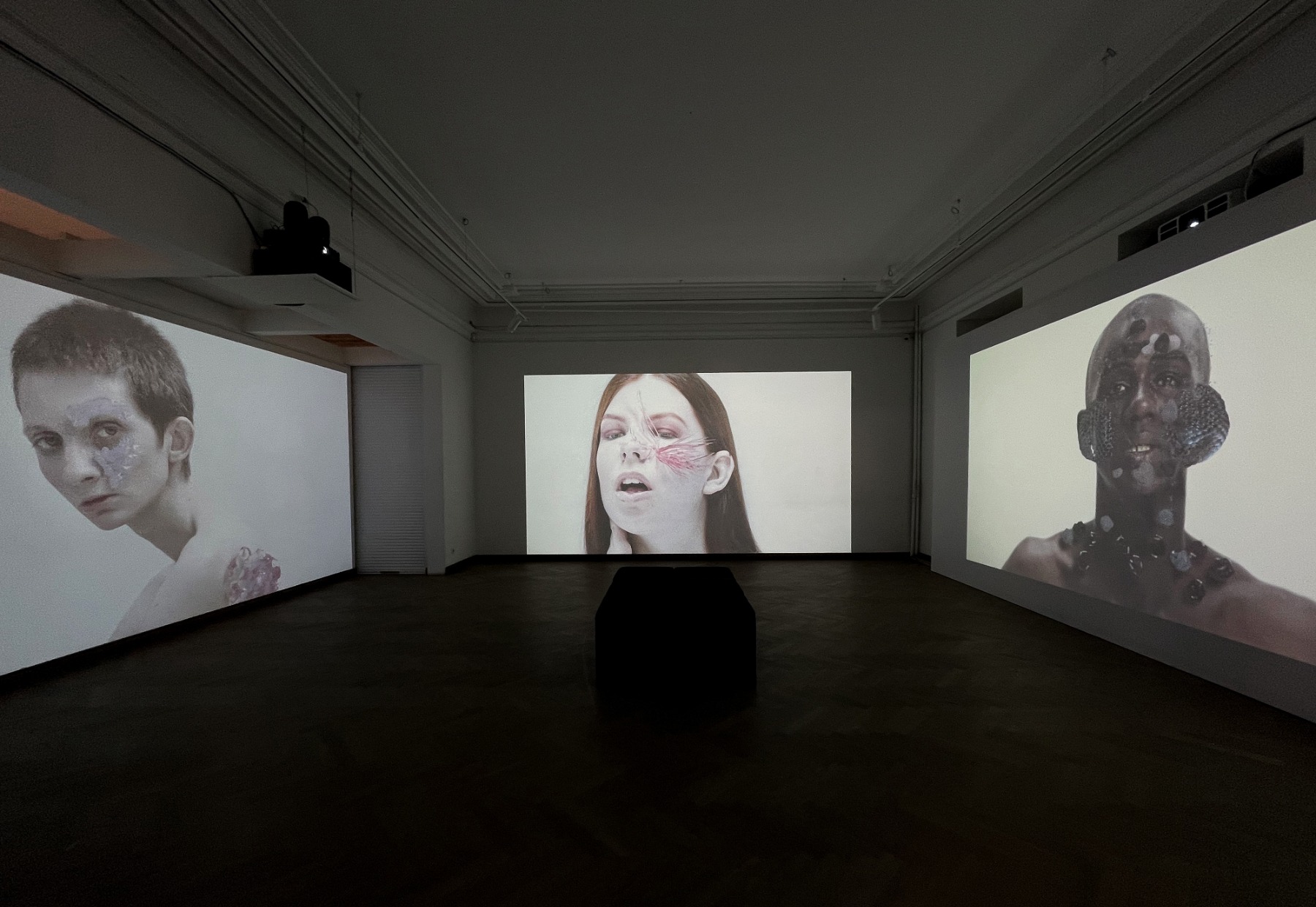
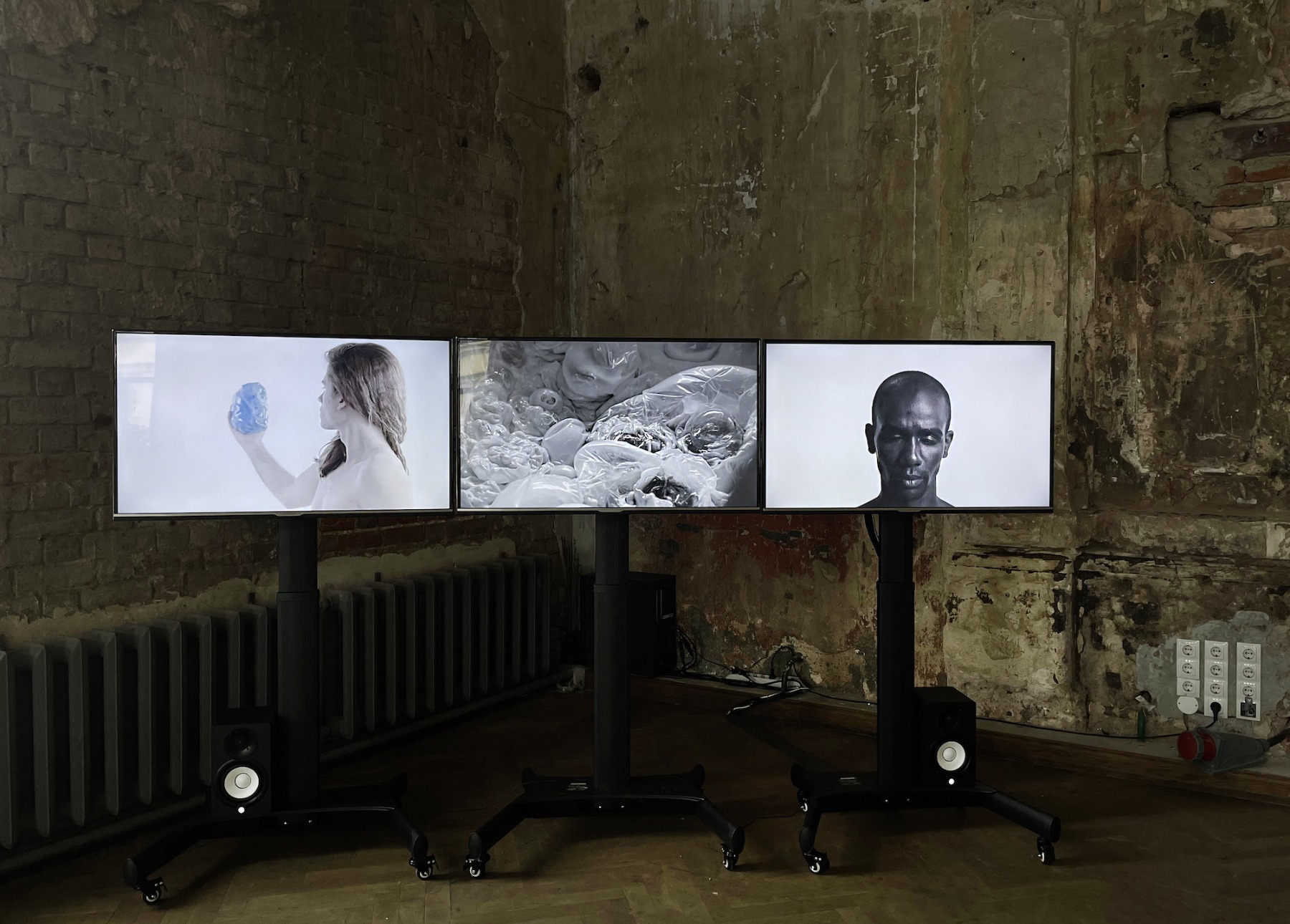
Right now, for example, modern philosophy captures by the ideas of reflection on boundaries between subject and object, redefines boundaries between and non-human agents. Ecology becomes the basis of the political statement and philosophical action of our time, asking the question of the future we want to live in and in which we might find ourselves.
Artists Katherina Sadovsky and Lilia Li-Mi-Yan, following similar philosophical reflections, pose this question in another segment of their exhibition: in the small hall of the Futuro Gallery there is a series of videos from the project “A000000000001000AA011” (2020-2021), which thanks to the exhibition solution (three large screens, each the size of a wall) are perceived as a three-channel suggestive video installation that allows a person to feel the possible new forms of life and “try on the image of the post-human of the future”, in a world where there will be no gender, and a person will enter into active collaborations with non-human agents: bacteria, materials.

This part of the exhibition essentially reveals its title, Myths of the Anthropocene. Thanks to the formal solutions of the video (be it noise-like sound or cgi graphics that illustrate the relationship between man and material) there is an unsettling sense of the approaching end of the “belle epoch”, in which homo sapiens was the self-proclaimed king of the beasts.
The myth of the end of the Anthropocene will die and return, because myth is cyclical, but each epoch sees its death differently. And it is in the awareness of the presence of one’s own end, whether it is a private death or the death of established forms of relationship between the human community and the planet, that one can sense the possibility of another world. Here - through an active existential experience - is the prospect of an ecological world of the future.
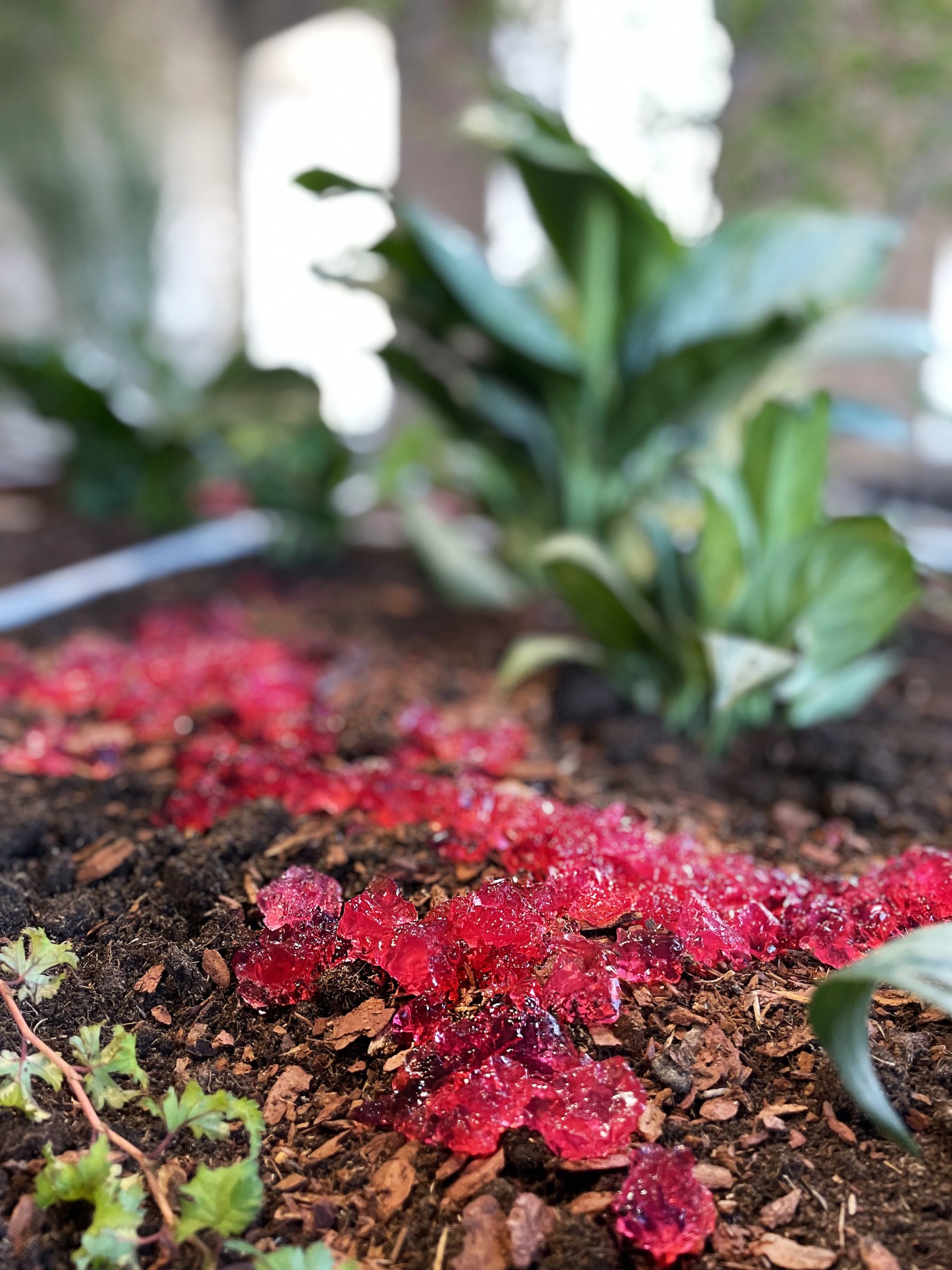
In the “present” is the centerpiece of the exhibition, a bed of living plants in the middle of the gallery’s large hall. This work is the result of a collaboration with scientist Sakina Zeinalova, who has developed a biodegradable material, “hydrogel”, with prospects of becoming an alternative to plastic. Violet hydrogel, aesthetically left to decompose among the plants in the flowerbed, seems to offer viewers a glimpse into the history of its own disappearance: the artistic-scientific experiment lasts throughout the duration of the exhibition, at the end of which the intrigue will cease and the viewer will be able to learn about the rate of decay, and hence the effectiveness, of this material.
Thus, if the first segment is designated “activist”, and the last artistic and philosophical, then the central one can be called a scientific research.
On the basis of this three-part division of the exhibition, we see a model for the thinking of the contemporary artist, who, in order to remain in the field of modernity, is situated between activism, art, philosophy and science, existing at the intersection of these fields of knowledge. Ecology in this model is the necessary relation to subjects and objects that lie beyond the boundaries of the self, without which the production of new forms of utterance is impossible.
Such a statement always needs air, and this is probably why the artists have taken a very ecological approach to the space of the Futuro gallery, not overloading it with objects, but creating between the works the necessary distance for a walk, overcoming which, the viewers can independently think about what they are encountering at this exhibition.
Translated by Dmitry Gugin